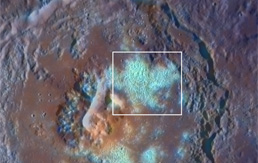Podcast: Play in new window
BOB HIRSHON (host):
Spotting taste in the brain…I’m Bob Hirshon and this is Science Update.
Why does a sweet orange taste so different from a bitter grapefruit? The answer may lie in a part of the brain called the insular cortex. Neuroscientist Nyck Ryba of the National Institutes of Health and his colleagues at Columbia University measured brain activity in mice as they were given different substances. Specific areas of the brain lit up for four of the five known tastes.
NICK RYBA (National Institutes of Health):
Sweet, salty, umami and bitter tastes are each represented in their own hotpots, and these hotspots are clearly arranged in a map that is reproducible from animal to animal.
HIRSHON:
Strangely, the researchers were unable to locate a set of neurons in the insular cortex that respond to sour tastes. They speculate that the acids in sour foods may stimulate nerves in the mouth other than just the taste buds, and so might actually be represented in a different part of the brain. I’m Bob Hirshon, for AAAS, the science society.
HIRSHON:
I’m Bob Hirshon, for AAAS, the science society.

 Podcast for 7 October 2011
Podcast for 7 October 2011